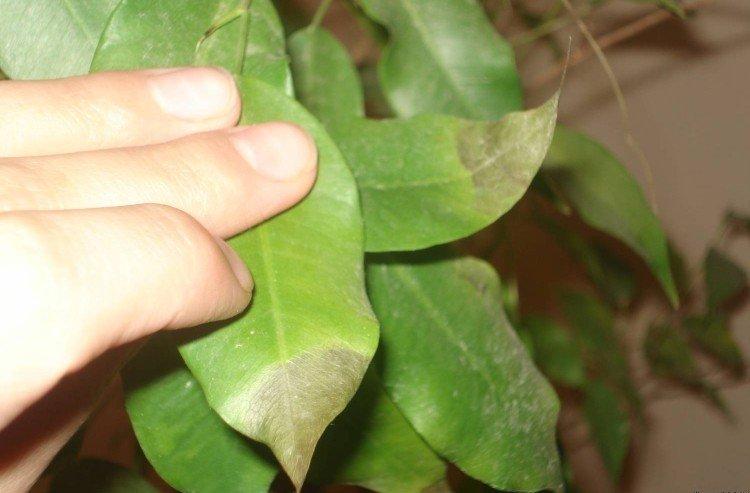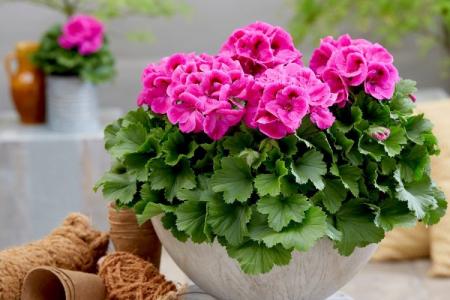
The plant gets its name from the Spanish botanist Jackson Benjamin Deidon. This is a beautiful shrub with small leaves, which is not at all difficult to care for. Let's tell you more!
The main features of the plant
Several types of ficus are grown at home, but most often you can find Benjamin's variegated ficus or a shrub with dark green foliage. The flower is a fast-growing flower; for the first year of life, with simple care, its crown will increase in height and width by at least 20 centimeters.
By the way, Benjamin's ficus is mistakenly considered an exclusively ornamental plant, but in fact, in nature, it is a flowering shrub. True, it is extremely difficult to achieve flowering in an apartment or house, even almost impossible.

Perfect location
Ficus Benjamin is a very thermophilic and photophilous plant. Choose an east or south window for your green pet. The shrub will feel good on the south side of the house, but not on the windowsill, but, for example, on a coffee table a meter from the window opening. At the same time, tulle or curtains should cover the flower, scattering the direct midday rays of the sun.
The air temperature in the room where Benjamin's ficus grows should not deviate too much from the +20 degrees mark. Water and spray the shrub more often in summer to help it survive the heat. In winter, be sure to transfer the flower to a heated room. At an air temperature of +16 degrees and below, the plant may die.
Keep ficus away from drafts, they are destructive for him. It is also undesirable to place the pot in the plant near central heating radiators or heaters. Too dry air will contribute to the appearance of insect pests on the flower.

How to water Benjamin's ficus
Ficus Benjamin can shed foliage if the earthen lump stands completely dry for several days. In cases where the substrate in the pot does not have time to dry out at all, all kinds of rot begin to develop, capable of destroying a large perennial shrub in a short time.
In the matter of watering this plant, the golden mean is important. Moisten the soil in the flowerpot only when it dries out three centimeters deep. You can check this by digging a finger or a wooden skewer into the soil. It is important that the water is at room temperature and settled for several days. During the summer heat, the leaves of Benjamin's ficus should be wiped once a week with a damp cloth from dust and dirt, as well as irrigate the air around the bush from a spray bottle.
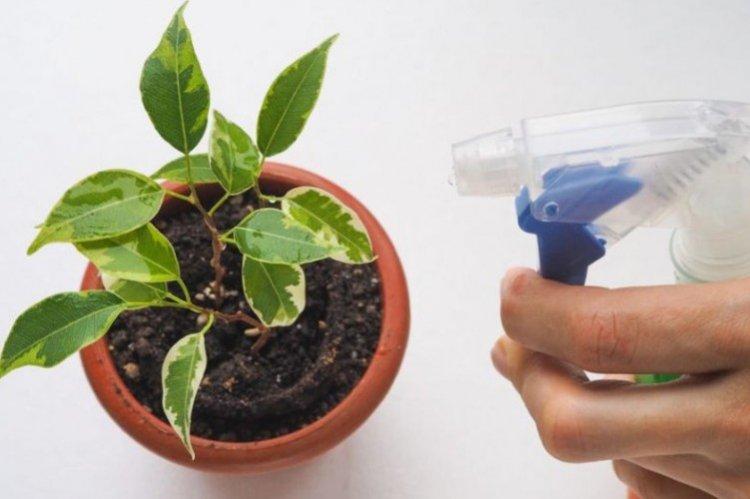
Reproduction of ficus Benjamin at home
To grow Benjamin's new ficus, disinfect the blade of a very sharp knife, carefully cut a small, semi-lignified branch of the plant obliquely. Rinse the slice under running water to remove the excreted milky juice. Then make a small longitudinal incision, as if splitting the stem of the cutting, and put it in a jar of clean water at room temperature. If the room is warm and there is enough sunlight, then the roots will appear in a week or two. After that, plant the cutting in the substrate and care as usual.
The second, more complex method of propagating Benjamin's ficus is by layering. To do this, select a lignified twig, make a transverse ring-shaped incision on it and cut off the bark in this place. Wrap the bare area with wet moss, wrap it with foil and fix it with thread. After a while, you will see that the roots are breaking out from under the moss. Cut off the layers with a sharp knife and plant them in the ground.
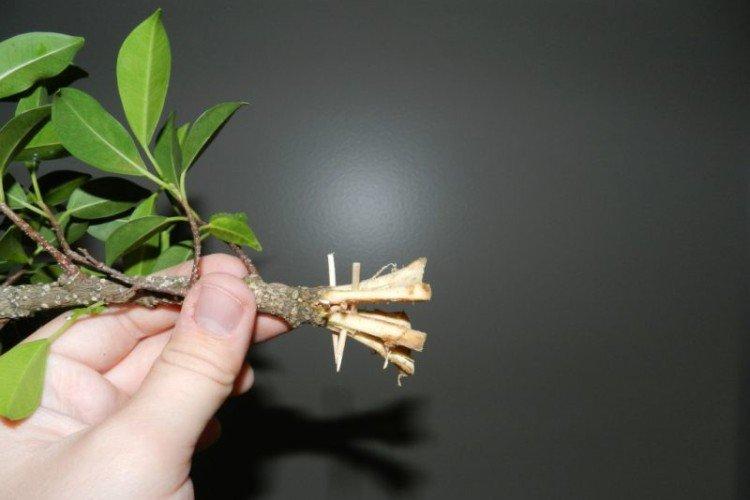
How to transplant Benjamin ficus
Benjamin's young ficus grows very rapidly in the first five years of his life. This increases not only the ground part, but also the root system. For this reason, the plant will have to be transplanted every spring into a container that is three centimeters wider and deeper than the previous one. Be sure to put a layer of drainage stones on the bottom of the pot, then move the bush along with the earthy clod and fill the voids with fresh substrate. In the first few days, do not water the ficus, let it fall back after stress.
Plants over five years old may not be transplanted for several years. The rate of their growth slows down and, if the roots do not appear from the drainage hole, then just carefully select part of the old soil with your hands and fill it with fresh. After this procedure, you can immediately water the flower, as it will not cause any inconvenience to him.

Fertilizers and feeding of ficus Benjamin
After transplanting or partial substitution of the substrate for six months, Benjamin's ficus does not need feeding. Excess nutrients in the soil will only harm the plant.
You can feed the flower during the growing season: from mid-March to the end of September. To do this, use liquid universal fertilizers dissolved in water for decorative leafy indoor plants.
Add dressing in the morning once every two weeks. Also, the fertilizer can be dissolved in water, poured into a spray bottle and sprayed on the flower every 10 days. Keep in mind that nitrogenous fertilizers, with frequent use, will lead to the fact that the variegated leaves of Benjamin's ficus will simply turn green.

Crown formation
Benjamin ficus is used in the Japanese art of making living flower bonsai sculptures. But even when growing an ordinary shrub, it is necessary to give it a beautiful shape, for this, in the spring, prune, removing dried and shortening too elongated branches. All shoots, the growth of which is directed into the crown, cut off at the base, so you can thin out the branches, which will allow the ficus to grow foliage more actively. The decorativeness of the flower will only benefit from this.
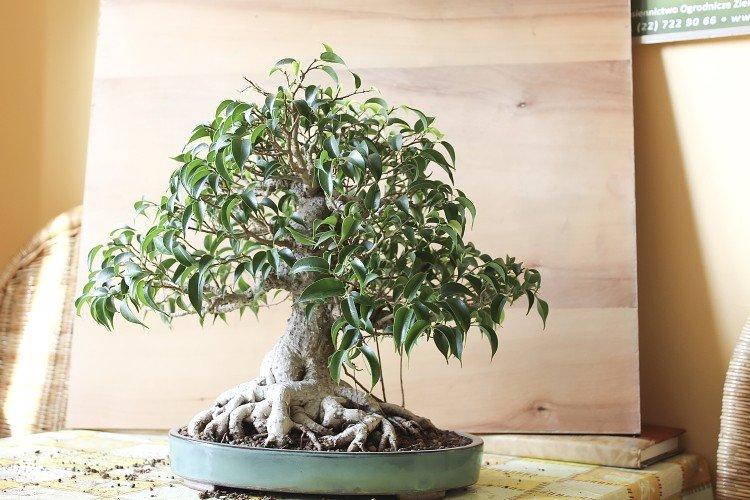
Plant diseases and pests
If the leaves curled on the bush and began to fall off, it means that it is too cold. Move it to a warm room, it will quickly move away, and the foliage will straighten. But if the crown of the ficus began to turn yellow, it means that its roots were affected by rot. Transplant the plant into a fresh substrate, be sure to cut off any damaged roots. Water sparingly and only after the topsoil in the pot dries well.
As for insect pests, Benjamin's ficus sometimes affects mealybugs, spider mites, aphids or scale insects. At the initial stage of infection, you can get rid of them by wiping the stems and leaves with a sponge dipped in a solution of laundry soap. If there are too many pests, specialized insecticides will come to the rescue. It is important to understand that no diseases and insects can harm healthy and well-groomed plants, so try to provide your Benjamin ficus with proper care.
